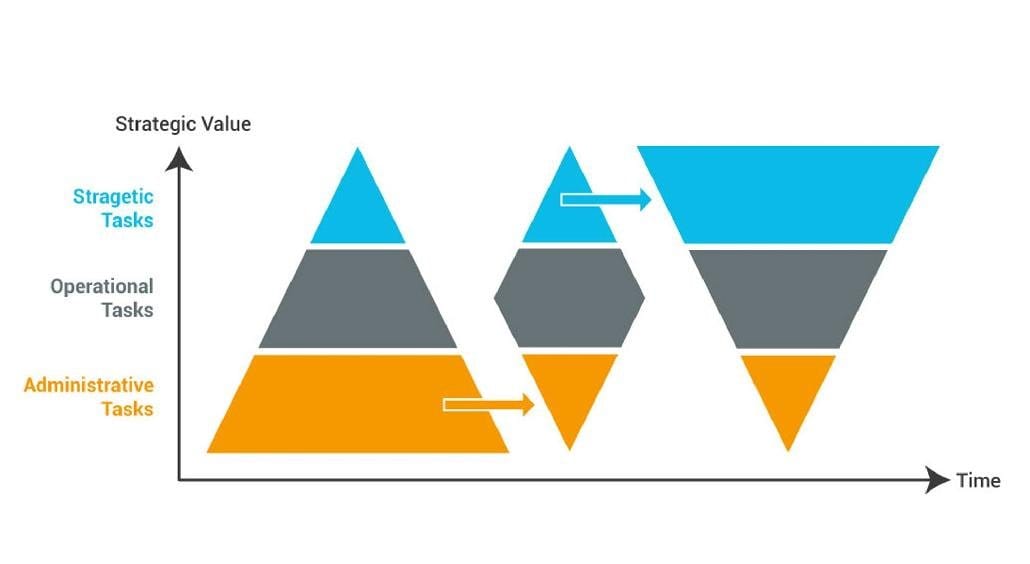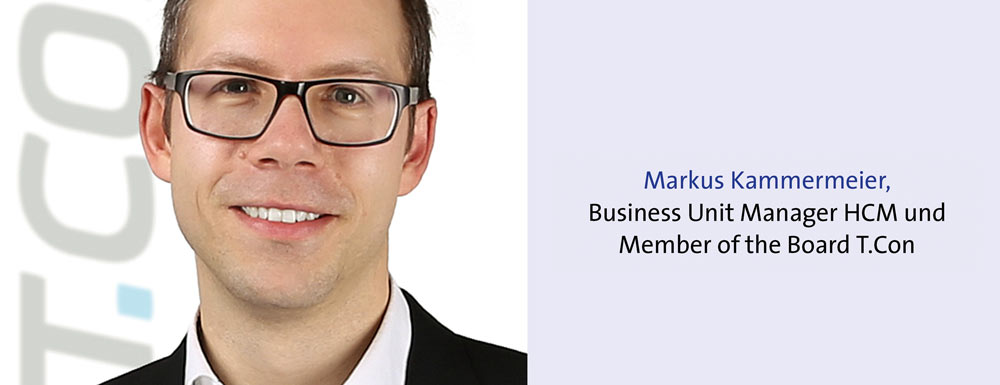The Five Biggest Hurdles to HR Efficiency


The constantly growing dynamism of the business world confronts HR departments today with a wide range of challenges - keyword working world 4.0 or ll. In order to master these tasks, it is essential to digitalize and harmonize HR processes throughout the company so that they can be handled efficiently, flexibly and transparently, and to define HR key performance indicators (KPIs) in a standardized manner. However, studies such as the HR Software Monitor 2017 show that the digitalization of HR processes is still in its infancy in many places. As a result, HR departments are so busy with time-consuming manual activities and administrative tasks that there is hardly any room for strategic HR work.
The Five Biggest Hurdles to HR Efficiency
The following five points consume an unnecessary amount of time and form the biggest hurdles to greater efficiency in HR processes:
- Decentralized management of HR master data: over the years, many companies have created a heterogeneous HR landscape with many different applications—SAP and non-SAP software, on-premise, and cloud applications—that are not or only insufficiently linked.All personnel data must therefore be created, managed and, if necessary, deleted separately in the individual HR solutions. This multiple entry not only harbors the risk of input errors, but above all leads to a skewed dataset.
- Media discontinuities due to data silos: in a heterogeneous HR landscape, data silos arise that cause media discontinuities and make labor-intensive manual work steps necessary.Processes such as absence reports, vacation and travel requests, or expense reports are often still handled on paper. This inevitably affects data quality and auditability.
- Consolidate HR KPIs manually: companies that do not manage HR data centrally and store information, for example from employee interviews, as paper documents, have to merge, consolidate and prepare HR data by hand.The quality of HR KPIs and of analyses and reporting suffers as a result. Management then receives HR reports based on outdated information, and with a time lag.
- Recording and correcting personnel times by hand: efficient time management is a prerequisite for reliable payroll accounting. However, clock-in and clock-out times are often entered or corrected manually, and approval processes, such as for overtime, are unnecessarily complicated if they are not handled digitally.
- High search effort and information deficits: who is my contact person in the HR department? Where are which HR forms stored? Answering these and similar questions is time-consuming if the relevant information and documents are not stored centrally, but in different filing systems or even in the filing cabinet.
Digitization needs central personnel data
Such time wasters, as well as delays in HR reporting, can be eliminated if HR processes are digitized and automated. The prerequisite for this is the uniform, centralized management of data for the entire workforce from all company locations—in strict compliance with the legal requirements in each country, of course. The starting point for the consolidation of personnel data is an analysis that shows which locations use which HR data in which HR processes and systems. This analysis is used to create a personnel data master that is valid throughout the company and is fed into the central HR master data system.
In this context, the conditions for creating, changing and deleting personnel data in the future should also be defined, an aspect that is also of great importance with regard to the new EU General Data Protection Regulation (EU GDPR). A modern cloud platform such as the HCM suite from SAP SuccessFactors is the ideal central system for managing HR master data, with an intuitive SAPUI5 interface that allows users to perform their tasks on a role-based basis, both on the desktop and on the move via smartphone or tablet.
Uniform global HR reporting
If payroll or time management is to be carried out in on-premise solutions, the corresponding data must be transferred correctly from the HR cloud to these applications, regardless of whether it is SAP or non-SAP software. Conversely, it must be ensured that payroll and time management data is transferred to the cloud software and is available there for analysis.
Central and uniform administration of personnel data, including information on the skills, abilities and professional interests of individual employees, also creates the basis for identifying needs and trends in personnel development at an early stage and planning ahead. At the same time, this data forms the basis for the uniform definition of KPIs such as full-time equivalents or fluctuation across all locations, thus enabling prompt and harmonized global HR reporting of a high quality.

Cloud apps digitize HR processes
An important building block for the successful implementation of an HR digital strategy are cloud-based, intuitive apps that allow specific HR tasks to be completed easily, streamlined and transparently via self-service. On the employee side, these include vacation requests, sick leave, recording and changing working hours, managing personal data or travel management, from application and approval to recording travel data and expenses and accounting. On the management side, this includes approving or rejecting travel and vacation requests or assigning a vacation replacement, as well as viewing the team calendar and employees' time accounts.
To this end, companies can use mobile SAPUI5 apps, for example from the T.Ccon HR Portal based on SAP Cloud Platform, which integrate seamlessly into the existing SAP landscape and supplement and extend the standard functions of SAP HCM. These apps enable the digital handling of such processes without media discontinuity: all information ends up directly in the HR department or with the line manager or vice versa with the employees, which ensures a high level of transparency with regard to approvals and workflows. Another advantage of the HR portal is its flexibility, as a new app can be developed quickly for any new HR requirements, such as those currently arising from the German Pay Transparency Act (EntgTranspG).
A key aspect of HR digitalization is to review and optimize existing processes in line with the business strategy and HR objectives, as well as to develop and introduce new HR processes that noticeably increase the contribution to value creation. However, the diverse tasks involved in such a project require in-depth specialist knowledge and therefore the support of an experienced consulting partner.
It has the necessary expertise, works with the HR organization to develop a digitalization strategy and the individual roadmap for its implementation and also offers support with software selection, the consolidation of HR data and the definition of globally standardized KPIs. Such a partner should provide all services from a single source—from the selection of suitable solutions (on premise, cloud) and apps to process design, implementation and support for the applications and processes after commissioning. It is also important to support changes that arise because digitalization breaks up established processes and responsibilities with tried-and-tested change management methods. Then the path is clear: the HR department is transformed from an "administrative administrator" into an "active designer" of future-oriented and value-adding HR work.








